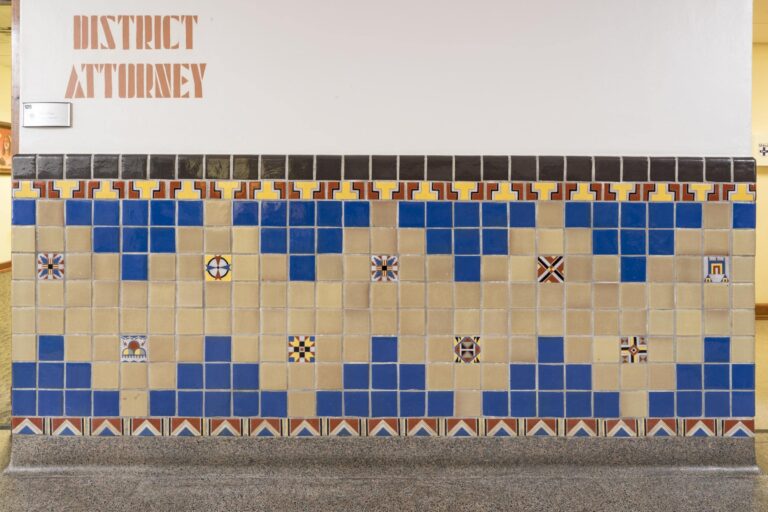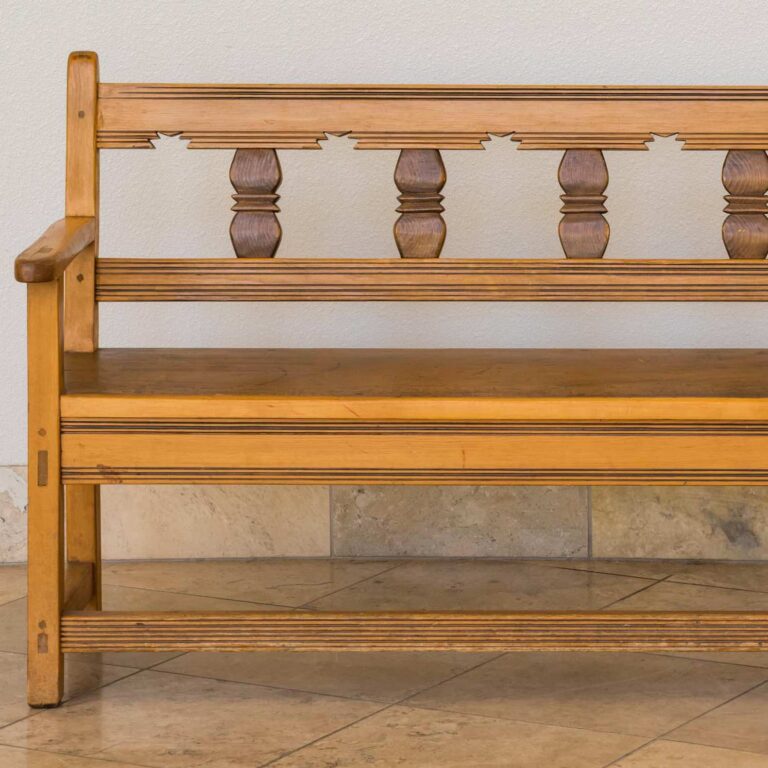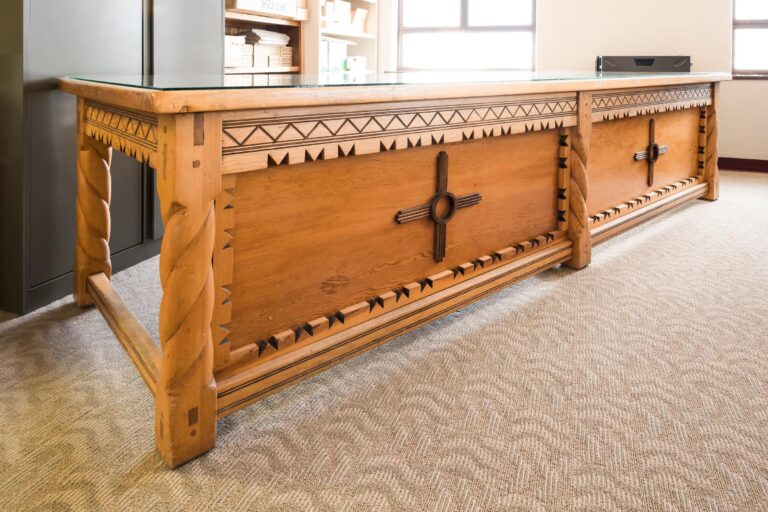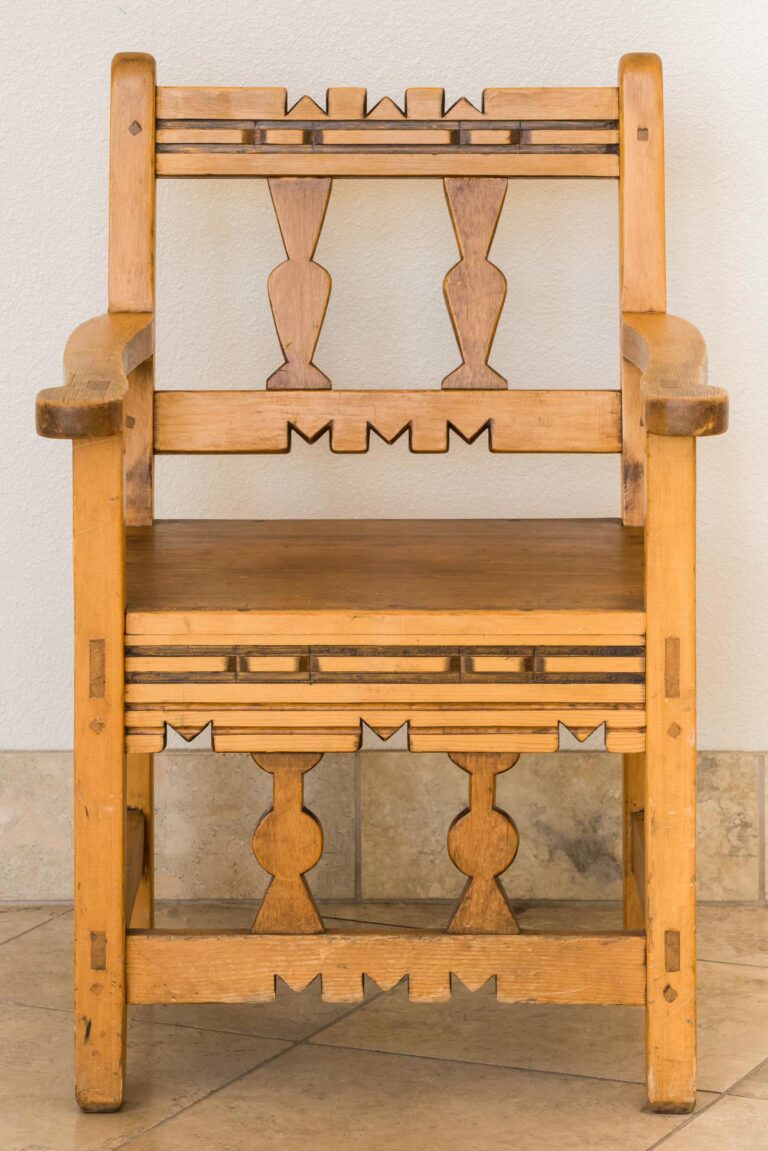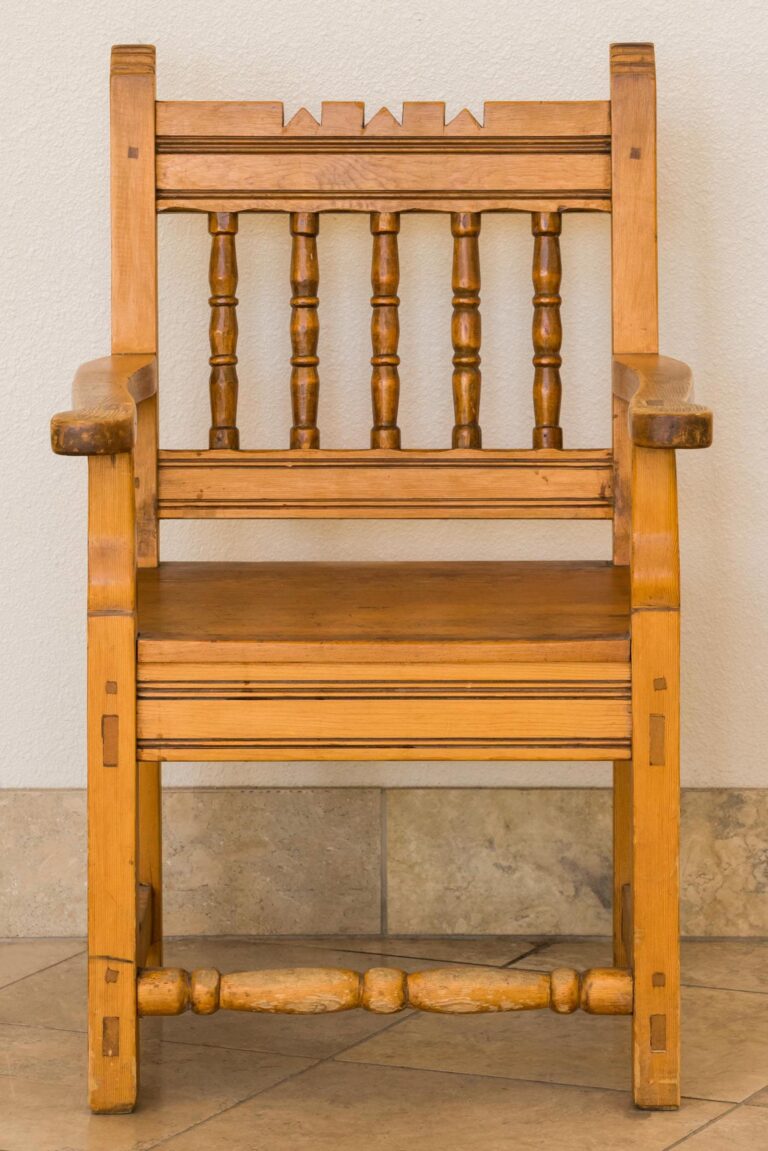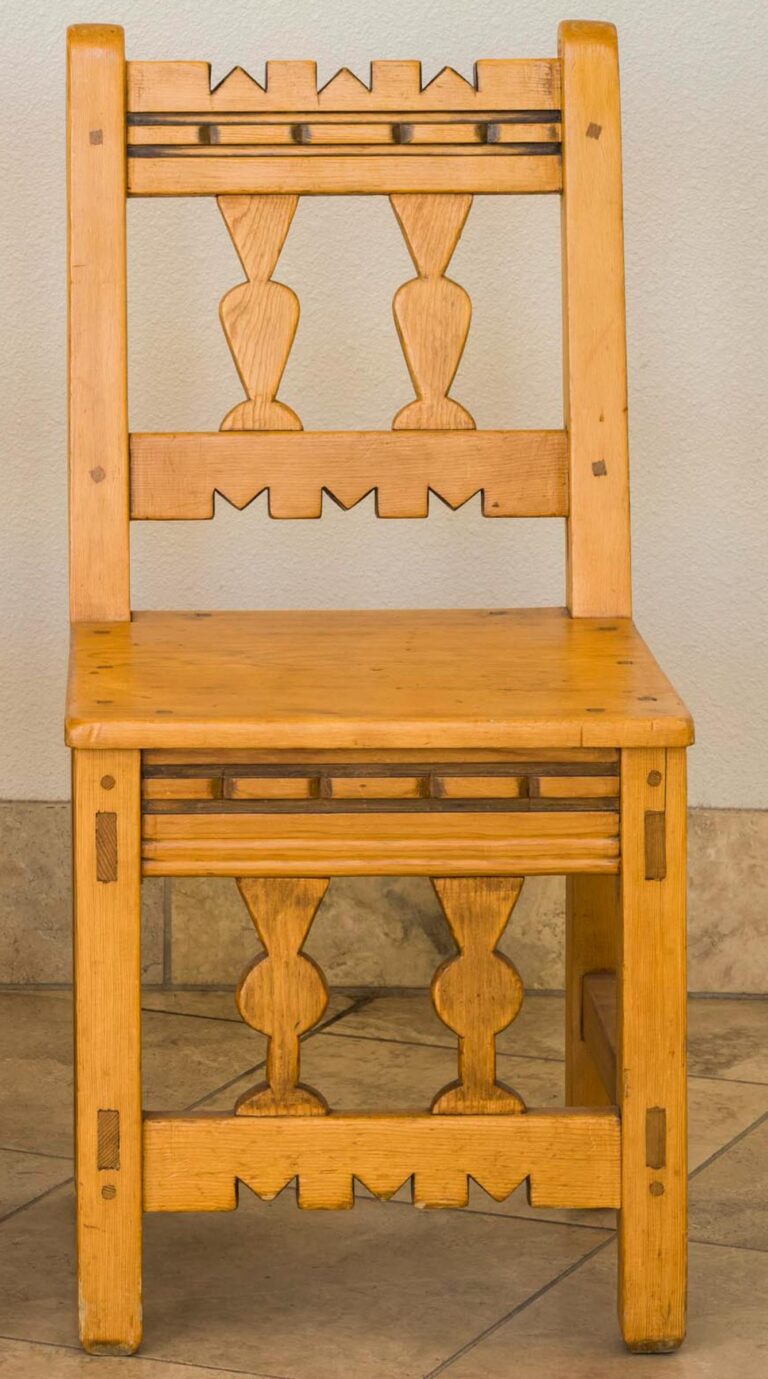In terms of its decorative arts projects, New Mexico’s New Deal and associated art programs were specifically interested in styles of Spanish Colonial design unique to what is now New Mexico (what were the northern provinces of New Spain in the 18th century). What is referred to as a “Nuevomexicano” aesthetic developed mostly in response to geography. While hardwoods were accessible in what is now Central America, soft pine was what was readily available in what is now the Southwestern United States. That led artists to simplify originally ornate patterns that would not turn out as well in soft wood. Here, for example, the slight S-curve of the table legs is an understated version of a more elaborate style (the technical term for which is “cabriole”). Another simplified element is the basic wavy edge of the table skirt (located under the drawer).
